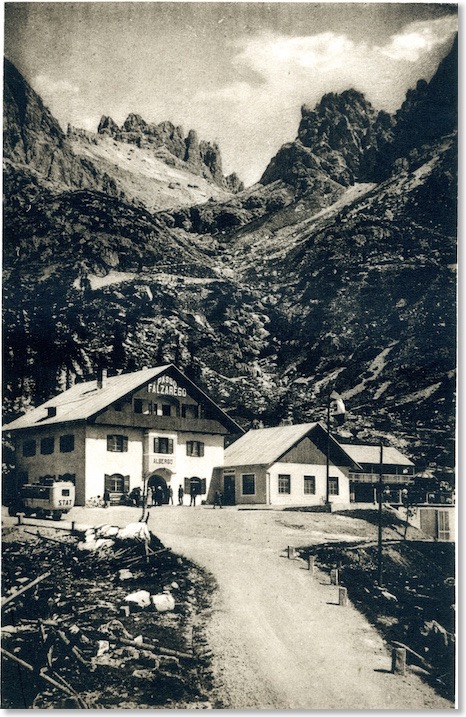
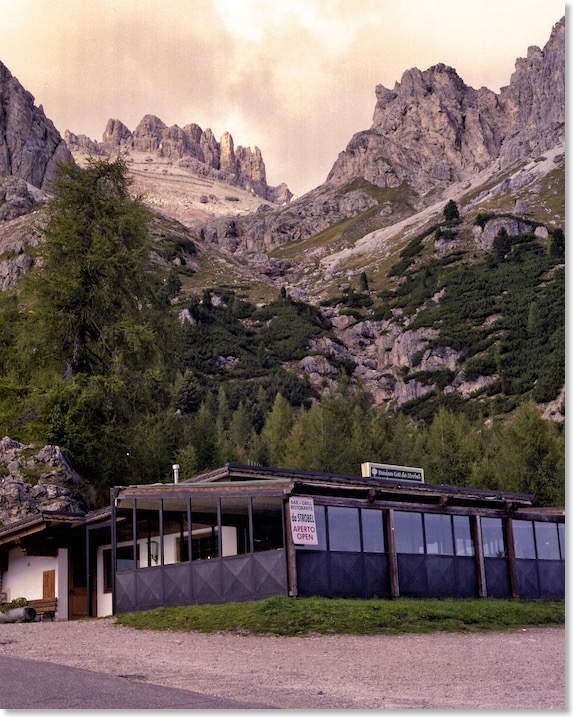
(Note: This page has been extensively re-written several times, as research continues, in an effort to create a theory from the facts, and not make the facts fit a theory! I hope this page of the site will give you a flavour for what it is like, trying to piece a story together from photographic evidence.)
Click for map
This photo presented me with several conundrums during my first exploratory visit to the area for material for this web site. I thought I knew the area well, but it showed up big holes in my knowledge.
The buildings in Zardini’s photograph appear to be quite new when photographed, and the debris beside the road initially also suggests it too may have been recent when the photograph was taken. However, I could not find anything like that viewpoint at the summit of the Passo Falzarego, nor were there present day buildings there that were in any way similar style, or alignment to the mountain ridge above.
After an hour or so of frustrating search, I gave up and drove down towards Cortina to ponder this. However, a few days later, I returned from Cortina towards the Falzarego Pass. Glancing up at the mountains at the so-called “Col Gallina”, which is about a kilometre before the top of the Falzarego Pass itself, I saw the distinctive cockscomb ridge and narrow valley leading to it. “Gallina” means “hen” in Italian. Here was the spot! It was somewhere I’d driven through many times on the way to other goals.
Zardini’s building is on the north side of The Road. My strong inclination was to say that Zardini’s photo dates from not very long after the First World War. This is based on there being a motor coach in the photo, and an assumption that the debris all around is a remnant from the War. Early photos elsewhere on this site show that there were no buildings at the head of the Falzarego Pass itself until about the late 1920s. Given that the Road over the top of the Pass was said also to be one of the final parts to be completed, my assumption is that “Col Gallina” marked the highest point accessible by vehicle until the Road was completed, and continued to be so until the Road at the head of the Falzarego Pass was repaired and reinstated, after the inevitable ravages it will have suffered with the fierce WW1 fighting so nearby.
At some point, this building became known as “Menardis”. I think these four postcard views are pre WW1 and show the original buildings at this point. The prominent Austro-Hungarian colours flying in the third of them suggests life before the First World War. There is no doubt that these buildings stand on the site Zardini photographed, but they are different buildings. My assumption is that they were destroyed in the First World War fighting that took place all around them:
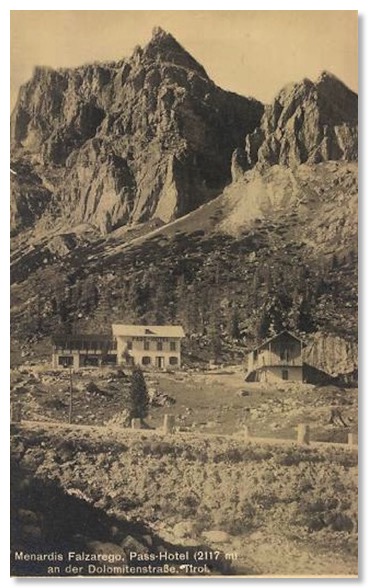
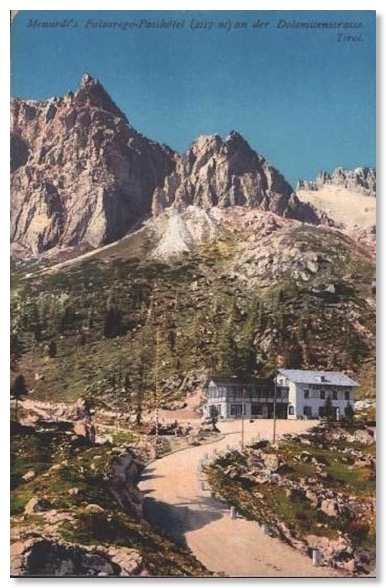
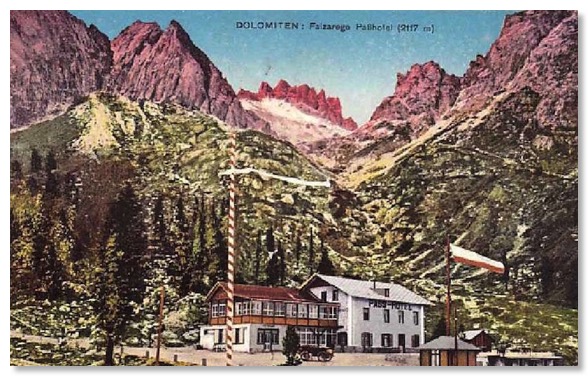
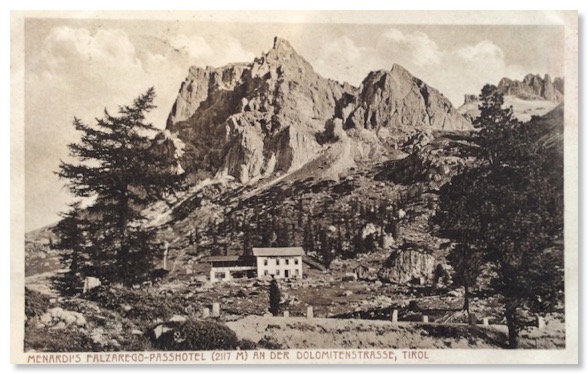
These buildings and the viewpoint used in Zardini’s photograph appear on many local postcards from the early 1920s. Below is a genuine Zardini postcard view of them. It was never posted, and carries neither hand-written date nor postmark, but the buildings are in every way identical with the first shot on this web page. The caption is a mere "Passo Falzarego":
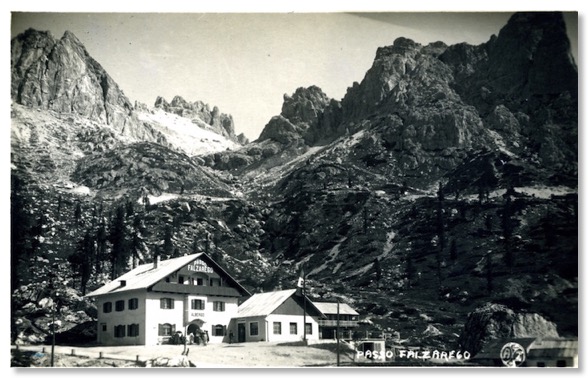
I also found this hand-coloured view of the same set of buildings, also infuriatingly, with no date on it, plus the one below it, taken from another angle. It shows the buildings looking very new. Landscaping work around them has yet to be done, and there is a saw-horse in the photo, suggesting carpenters were still at work. I have not been able to date the elegant motor vehicle outside:
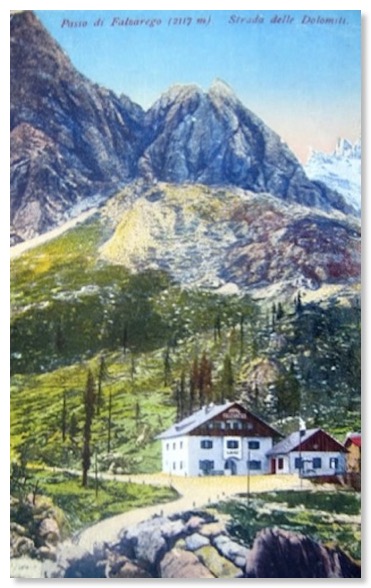
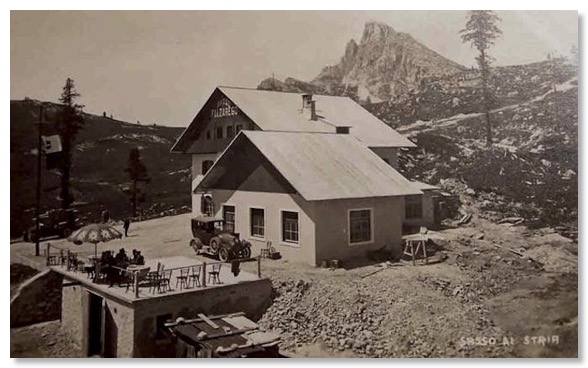
In the Cortina to Bolzano version of the guide to the Road, Zardini revisited the area and took this photograph, presumably some time well after the photo above:
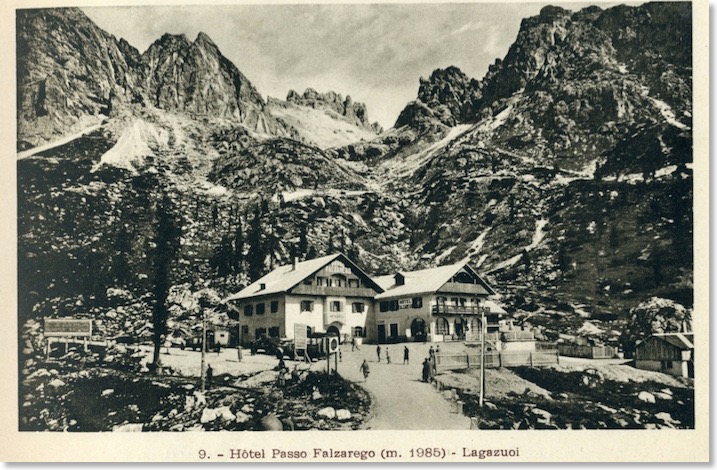
The viewpoint is almost identical. Notice the two large white rocks to the left of the road, at the bottom centre of the picture, for example, which feature in both photos. The alignment of the mountains in relation to the buildings is the same. However, the building to the right has been enlarged outwards and upwards to become something altogether more luxurious.
Dating of the images was helped by finding these postcards of the same enlarged buildings, the first of which had been posted in 1926, the second in 1932:
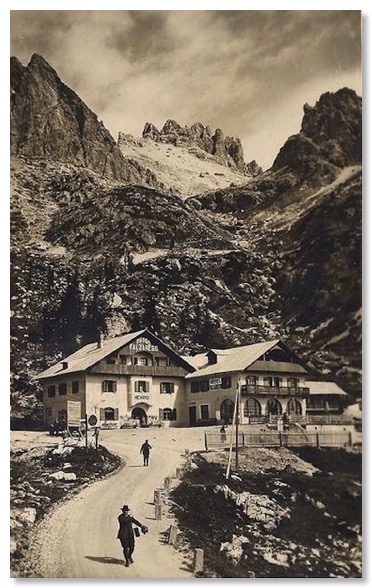
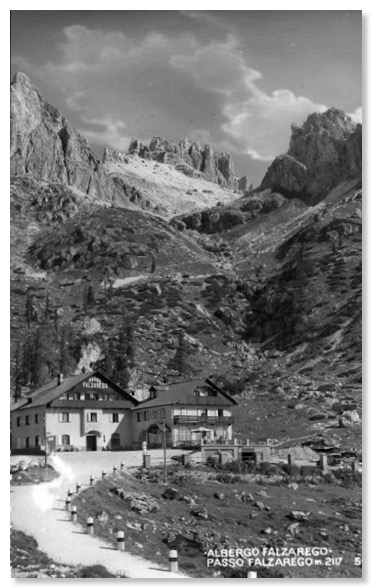
This winter view is not dated or postmarked, but shows the building that is on the right in the shots above:
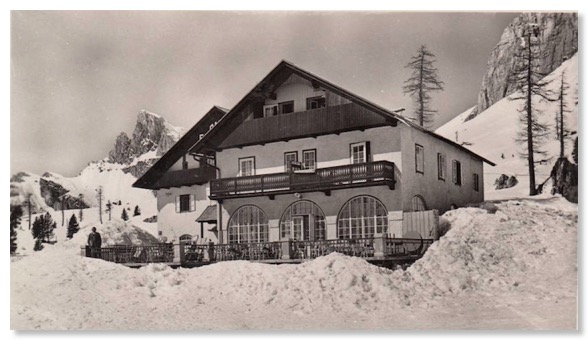
Another Zardini postcard, possibly from a little later. It is hard to be precise, because there is a third building, to the right of those already seen. It was there in the "1926" photo above, but not in the "1932" one. What is clear, however, is that the central building in the shot below was new after WW1, and was expanded within just a few years of being built. Evidence of high demand, perhaps, and also of a lack of accommodation and facilities on the road higher up the pass at that time:
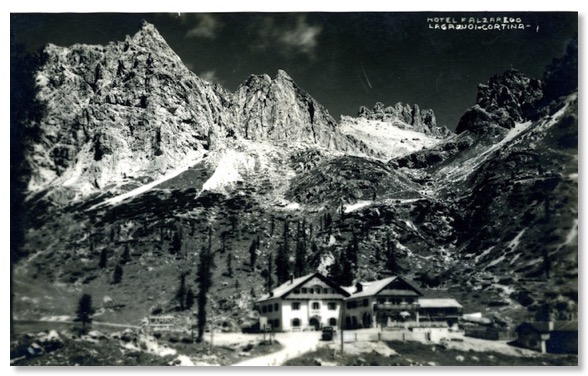
This postcard was very clearly hand-dated in August 1928:
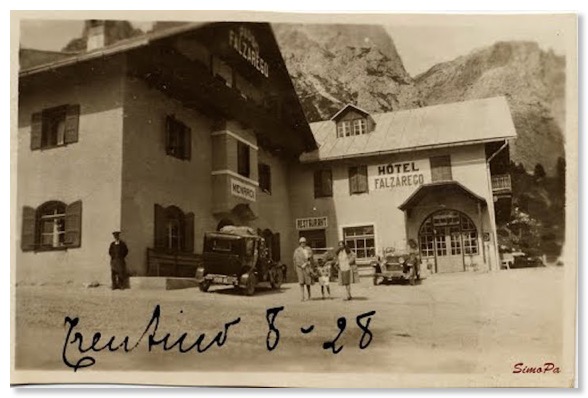
The left-hand building has the name “Menardi” over the door and it is apparent the right hand building served as a restaurant. The overall site is variously called the Hotel Falzarego or the Albergo Passo Falzarego. It was this that gave me difficulties in pulling this web page together.
Most photographically elegant, in my opinion, is this Ghedina postcard.
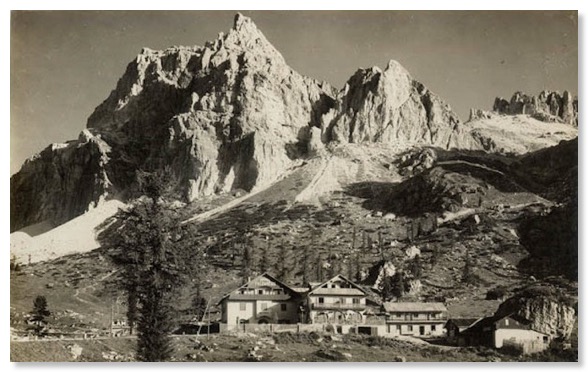
Here are two similar views of these buildings from the opposite direction. Both are early postcards, simply advertised as being “pre-1930” when I bought them. Again neither was ever sent, or dated. On the opposite side of the valley, the Cinque Torri rocks are prominent, and the peak in the background is the giant Sorapis:
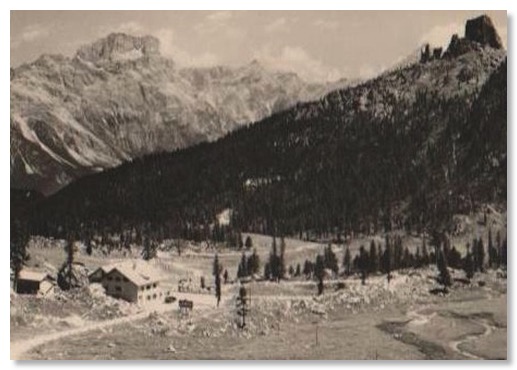
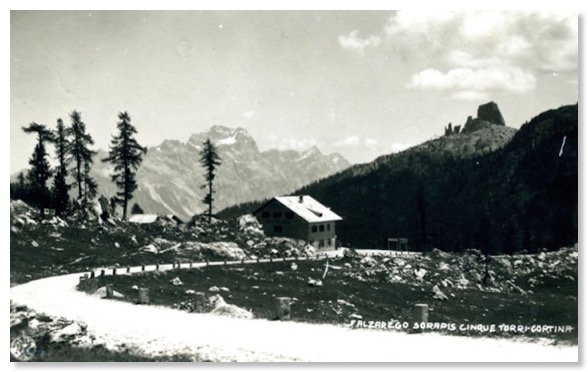
Ghedina of Cortina photographed the Hotel again later, too. One of these two attractive postcards in my collection carries the date of 12 August 1948 in the sender’s handwriting.
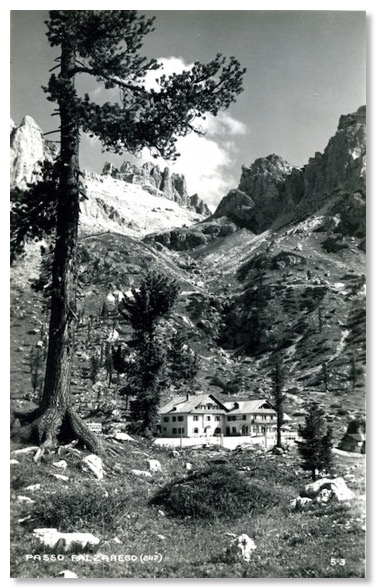
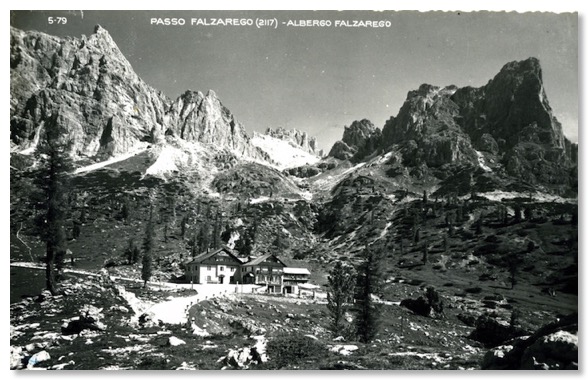
Adding to my confusion was this 1957 postcard. The mountains in the background are definitely the same, but the buildings where "Menardis" stood in earlier photographs seemed a pale shadow of their former selves. Closer inspection shows that most of the buildings have gone and what remains may only be a shell.
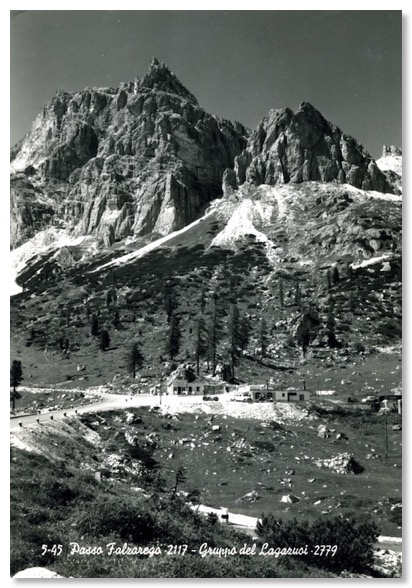
This was indeed so. I found the reason after more research. Sadly, the “Guida Illustrata Delle Grande Strada Delle Dolomiti” by F. Terschak (see Links page) reports that the Albergo Falzarego was “destroyed by an avalanche in the winter of 1950/51”. I have subsequently collected these four postcards, the first dated 1956 to 1959, which show all that seems to have survived. Notice that, in the first of the hand-coloured cards below, the window surrounds of the building nearest the camera, on the right, seem to match those in the two Zardini photos of the Albergo as it was built in the 1920s:
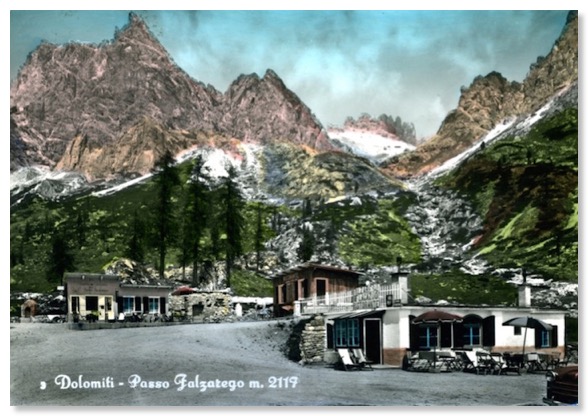
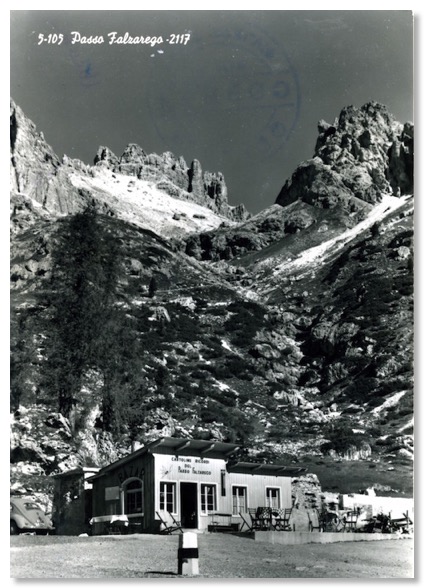
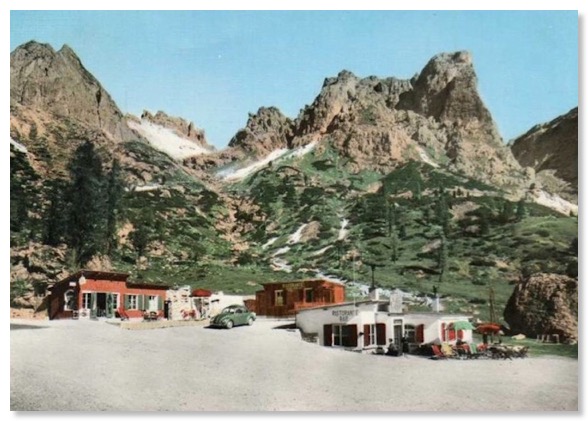
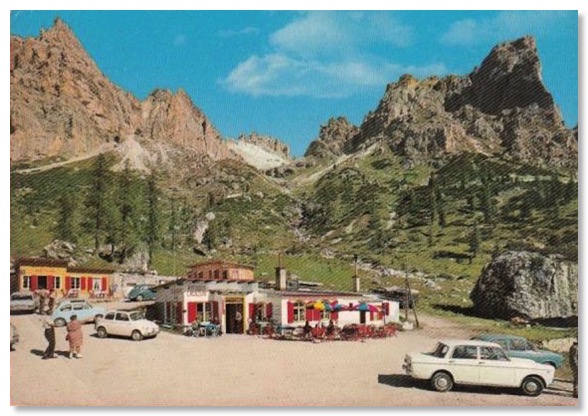
This helps to explain why my own photograph, while taken from Zardini's orginal viewpoint look nothing like what was once there. Menardi’s seems to have soldiered on as a petrol station and snack bar after the avalanche destroyed most of its buildings. Nowadays it is a popular road-side restaurant, with virtually no trace on the site of the buildings there previously. The backdrop has not altered much but it will never be possible to recreate Zardini’s original photo of this site. Here it is in 2013. Notice the large boulder (right) in the car-park, which is also very visible in some of the postcards above:
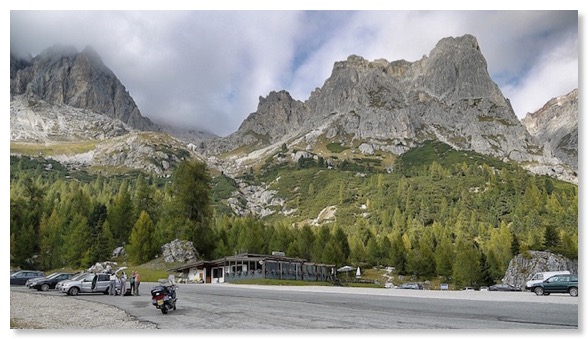
Piecing together the story of this view was confused by the frequent discovery of references to, and photographs of buildings called the “Falzarego Hospiz” and the “Hotel Falzarego”. For some time, I thought these were other names for the buildings on the Menardi site - possibly buildings pre-dating WW1. For example, I found a series of very old photos of The “Falzarego Hospiz”, with a mountain backdrop placing it in what, at the time, I thought was pretty much in the same spot as the Menardi buildings in Zardini’s photograph. The hand-coloured view is dated 1907:
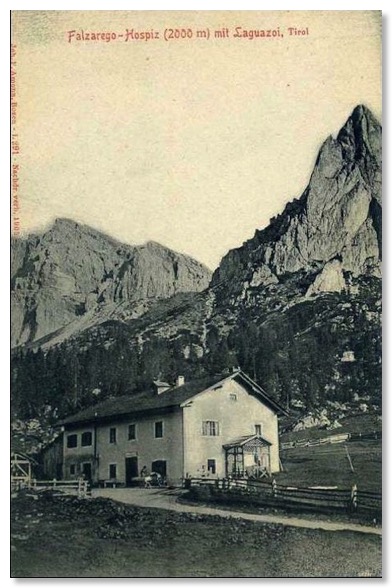
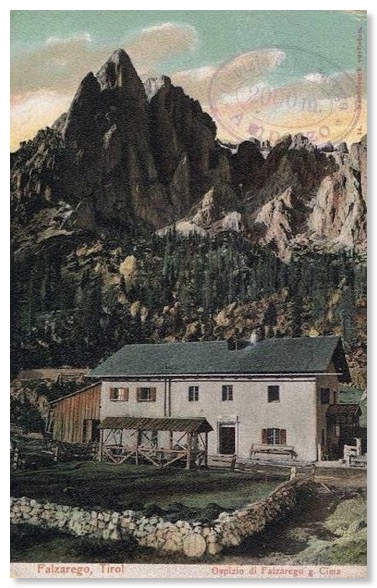
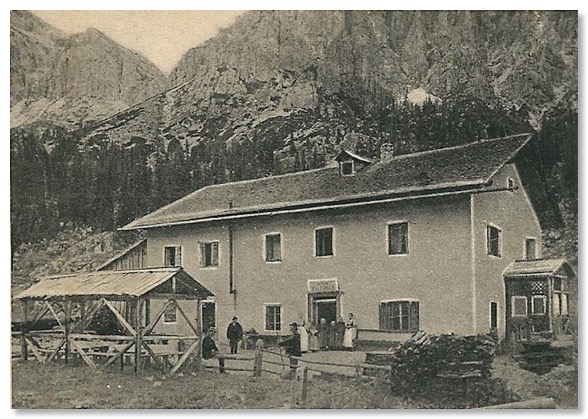
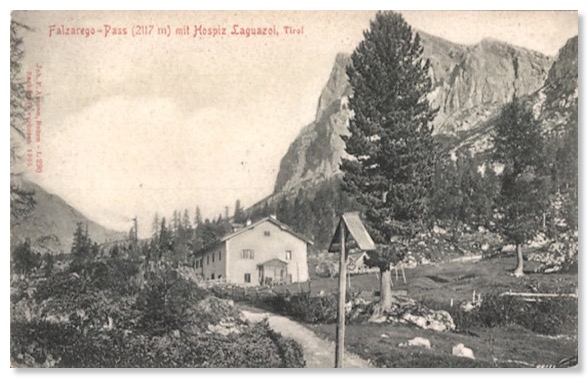
However, I was wrong about the location.
On my visit in September 2013, I realised that the site of these was about a kilometer further down the Falzarego Pass, towards Cortina, than I had originally thought. These buildings were completely unconnected with Menardi’s. There is now nothing except trees and boulders where they once stood. This was my estimation of the site of the "Hospitz", in 2013:
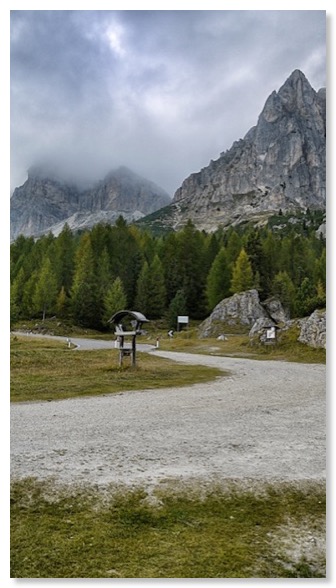
This just left the mystery of these six postcards in my collection, of a building called the Hotel Falzarego. Judging by its position in relation to the mountains, this seemed near or close to Hospitz buildings. It was clearly a major building, and the absence of any trace of it puzzled me. These photographs of it are all, in my view, pre WW1. The building would have been right in the line of artillery fire from the Cinque Torri gun emplacements and the Austrian fortifications on and around the Lagazuoi. It was inconceivable that it would have survived. The postcards below also show that it was right next to the Road.
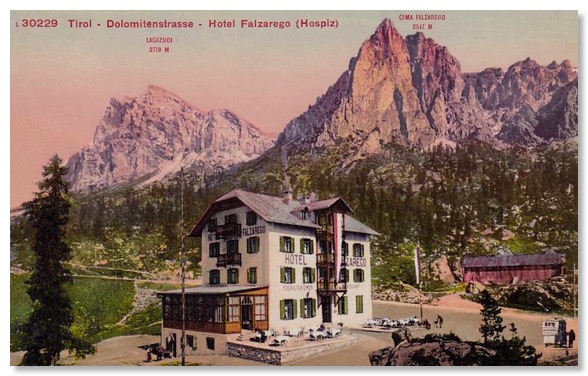
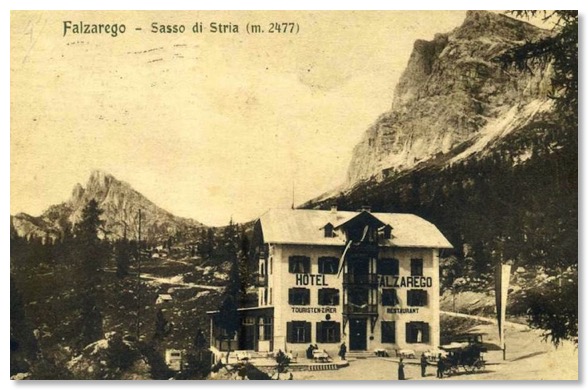
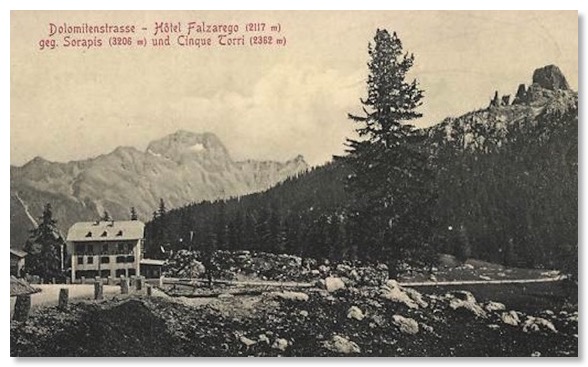
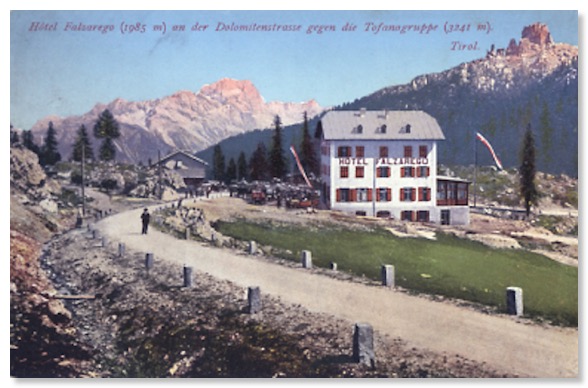
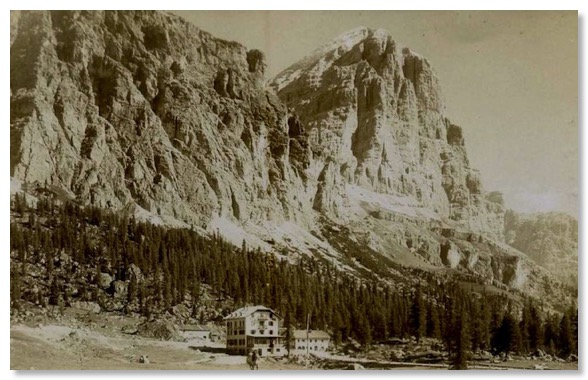
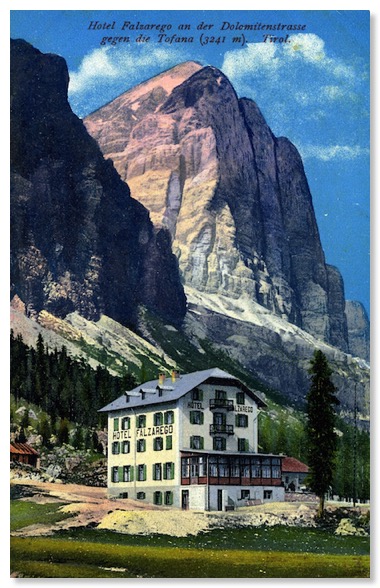
The alignment of the road ought to have told me far sooner that these were not on the "Menardi" site. The Road has been realigned hereabouts. I tried what I ought to have done far sooner, which was to line up my views with the mountains, to match what the postcards showed. And this led me to this:
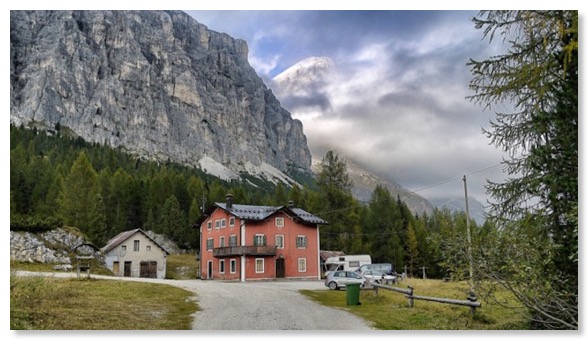
There is nothing standing on the site of the original “Falzarego Hospiz. Close by is a square-set building, smaller than the “Hotel Falzarego” above , but aligned on exactly the same axis. Compare this 2013 view with the last of the hand-coloured photos of the “Hotel Falzarego” above.
The clinching evidence, for me, was a local footpath sign on the edge of the woods just behind the building. It seems this area is still known today as “Ospizio Vecio”, which translates as as “Old Hotel”.
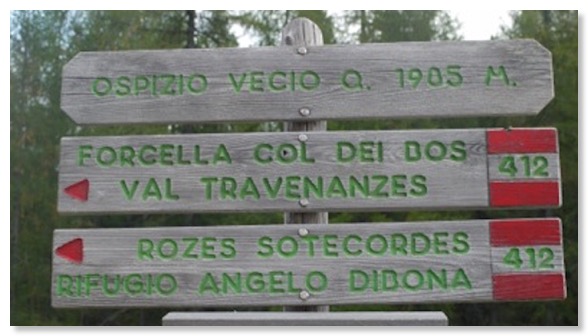
Subsequently to all of the above, some extremely productive postcard hunting on a 2014 trip to Bologna also gave me this card. It is almost the identical view to my own above, which was taken twelve months before I bought the card:
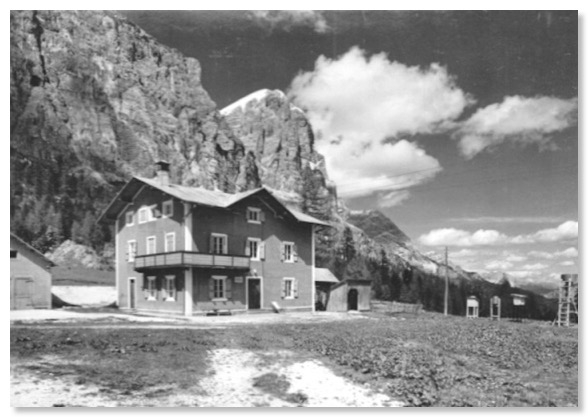
I plan eventually to do some research into the dates of the "Hotel Falzarego". Meanwhile, it remains my assumption it fell victim to WW1.
Another mystery solved, in part, at least, pending further research.